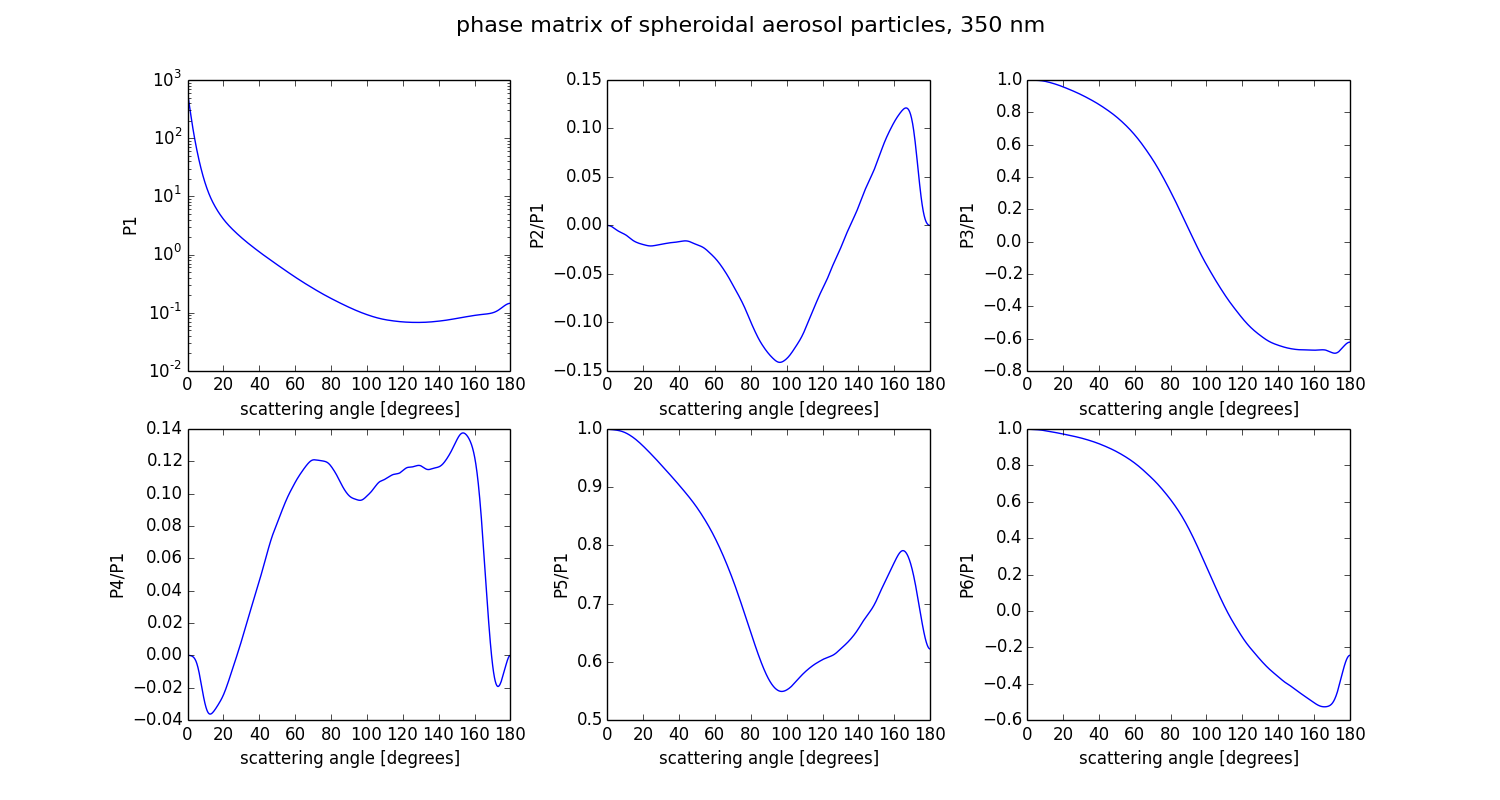User Tools
Sidebar
intercomparisons:d4_aerosol_spheroid
Case D4: Aerosol layer (spheroid)
This case includes the same setup as case D1 but including spheroidal aerosol particles instead of molecules.
Setup:
- no molecules
- aerosol optical thickness: 0.2
- aerosol optical properties: netCDF,ascii
The variable “phase” includes the phase matrix, as a function of the scattering angle (variable “theta”). The 4×4 scattering phase matrix for spherical droplets has four non-zero elements, which are stored in the following order: $ P = \begin{pmatrix} P1 & P2 & 0 & 0 \\ P2 & P5 & 0 & 0 \\ 0 & 0 & P3 & P4 \\ 0 & 0 & -P4 & P6 \end{pmatrix} $
The corresponding Legendre polynomials (“pmom”) and the single scattering albedo (“ssa”) are also included in the file.
 The expansion moments over generalized spherical functions for the phase matrix have been provided by S. Korkin and are available here.
The expansion moments over generalized spherical functions for the phase matrix have been provided by S. Korkin and are available here.
- Earth radius: 6371 km
- Thickness of layer: 120 km
- Sun-observer geometries as defined in general settings:
- viewing zenith angles (deg): [0, 9, 18, 26, 34, 41, 48, 54, 60, 65, 70, 74, 78, 81, 84, 86, 88, 89, 90] (up-looking at bottom of atmosphere, down-looking at top of atmosphere]
- viewing azimuth angles (deg): 0-180, 10° increment
- solar zenith angles (deg): [30, 60, 80, 87, 90, 93, 96, 99]
- solar azimuth angle (deg): 0
- sensor altitude (km): 0, 120
intercomparisons/d4_aerosol_spheroid.txt · Last modified: 2025/09/15 12:37 by claudia
Except where otherwise noted, content on this wiki is licensed under the following license: CC Attribution-Share Alike 3.0 Unported

